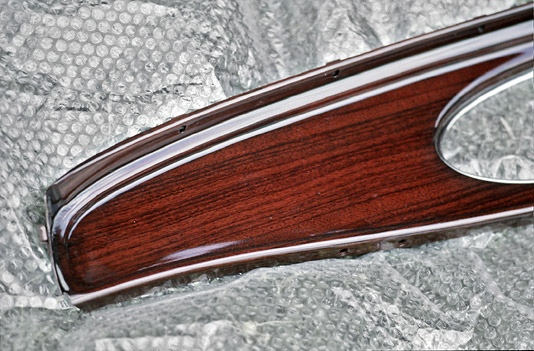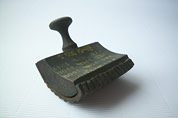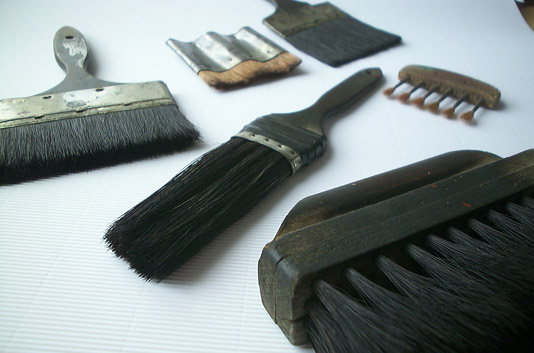 |
        
|

| |

|
|
| |
|
|
| |
Woodgraining
History
|
|
| |
 |
|
| |
One of
several original woodgraining patterns for the 1932 Ford |
|
 |

Why
woodgraining in collectible cars?
To answer that question we have to go all the way back to the
very beginning, some 100 + years ago. At that time the body
as well as the chassie was constructed of real wood, but very
quickly wood was used only in body building, later with metal
panels nailed to a wooden structure. But still, wood was used
ornamentally on the body as well as for the dashboard.
| (Step 1)
Later, when there was a need for speeding up the production
of the automobile, wood in the body was no more, like
in the Ford Model T, which got it´s structure and
even it´s dash in metal. But, that black painted
dash looked simple compared to the more expensive cars
which kept using wood for the dash and windowframes just
because it looked so beautiful. More and more cheaper
cars came to use metal dashes, and soon someone realized
that you actually could paint on “wood” and
get a woodlike surface. Suddenly the inexpensive car looked
expensive, and almost every automobile maker needed woodgraining
artists at the production line. |

What's this? >>> |
(Step 2) In about 1933 or 1934
came the next evolution of woodgraining – the method of
rolling on the woodpattern by a soft press, which was expensive
and difficult to produce. It was also difficult to handle, but
when it worked it worked fast. Screenprinting was also tested.
(Step 3) Next step came in the
late 30-ies, when the plastic film Di-Nock arrived. Finally
the automobile producer was in charge of the woodgraining. Now
you could start with a huge white paper on the drawingboard,
draw a suitable woodgraining pattern and colour it, photograph
it and scale it down to the size you needed, then transfer it
to the Di-Nock plastic film and glue it to the dash. This also
meant that we got some woodpatterns that has nothing to do with
nature, but still looks good. This was the ultimate solution
to automobile woodgraining, as it was used up until the late
1990-ies on the outside of US-wagons. After a few years absence
it´s now back again, like optional to the Chrysler PT-Cruiser.
(Step 4) So why do you need a woodgrainer
today? Just because there is no obsolete Di-Nock film to buy
(with a very few exceptions), we are back to square one again.
Today you need a good woodgrainer to reproduce step (1), step
(2) and also step (3). Woodman has more than 30 years of experience,
and is as close to you as your nearest Post office/phone/e-mail.

Woodman´s
most frequent used brushes to create the illusion of wood.
|
 |

|
|
|
|
|

|

|
|
|
|
|
